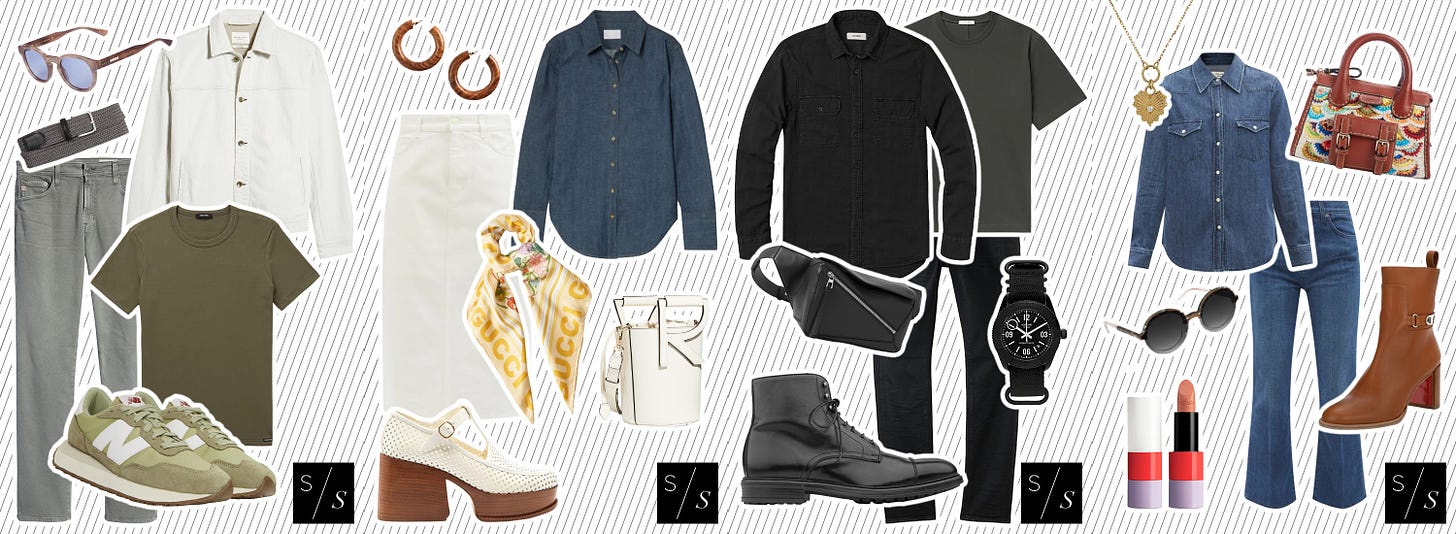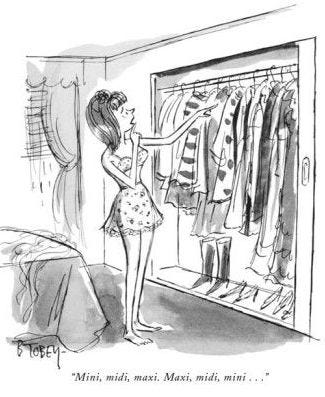Is your social calendar filling back up? Are you traveling again? What does your in-office workweek schedule look like these days? And what are you wearing for all of this?
You’re leaving the house more and more, returning to an active life with greater choice and freedom to walk out the door, sans mask (mostly), and be within less than six feet apart from someone. There’s a lot of uncertainty about what to wear.
Last week the Wall Street Journal published a piece on returning to the workplace wardrobes, highlighting a variety of responses from employees and employers on the expectations and actions of how company policies are dictating (or changing) associates workplace attire and how associates are choosing to dress when they show up for work. To no surprise, there isn’t complete alignment.
This shouldn’t be as complicated as it seems. General Motors CEO Mary Barra edited their policy back when she was the company’s HR leader to two words: Dress appropriately. Encouraging as this may be too many — to take a free license — it also creates problems. Lack of clarity can get you in trouble. More specificity with guardrails (not walls, there’s a difference) coupled with mutual respect and expectations can allow for a happy medium.
I recently wrapped a consulting project with a corporation on articulating new changes to their dress code policy with visual examples of do’s and don’ts (with highlighted product photos of what is appropriate and inappropriate). It worked wonders and helped reduce doubt in attire choices which can quickly lead to much more complicated matters (stress, anxiety, distraction, to name a few).
Dress codes have existed for centuries (look back to sumptuary laws), and they’ve been both serving and defied by collective groups. They aren’t going away. And this doesn’t solely apply to office attire. Social events and gatherings include dress details on invitations as a guide to not making a faux pas. Some restaurants and clubs have strict sartorial rules. When not adhered to, you’re denied entry.
We’re living through a ripple effect in this significant shift in life — this is your chance to reinvent your style, get clear on it, stop following trends, be more authentic, and adhere to a combination of work, lifestyle, and your own set of dress codes. I’ll leave you with a quote by Richard Thompson Ford from his book, “Dress Codes: How the Laws of Fashion Made History” —
“For self-expression in attire is never as simple as bucking convention and wearing whatever one likes: it requires one to evoke dress codes and subvert them simultaneously.”
Know someone who would enjoy this newsletter? Fashion is for all. Spread the love and share with them by clicking the link below.
Denim on Denim
Denim is the ubiquitous garment you reach for time and time again. It’s a fabric that you can dress up or dress down. It’s safe and reliable. A true staple in your wardrobe.
The New York Times fashion critic answered a reader’s question in the most recent Open Threads column: “Can You Be Too Old for a Jean Jacket?” The answer is no. Denim is a forever staple that will transcend your wardrobe for a long time (and yes, this includes skinny jeans for some). In fact, denim is democratic — worn by people of all ages, physiques, life experiences, and personal style archetypes.
Here are a few ways to layer denim on denim, just in time for transitional weather.
The Latest
Ready to play ball? Opening day is tomorrow. Elevated your ballpark look, whether you’re throwing the first pitch, posting up in a box, or sitting behind home plate.
The right denim fit: These nifty adjustable buttons make for better-fitting pants.
Reduce the noise: Dust off all your clothes and remove those that don’t serve you in a post-pandemic lifestyle. A lot has happened in two years; remove any baggage that doesn’t need to stick around — it will do you good.






